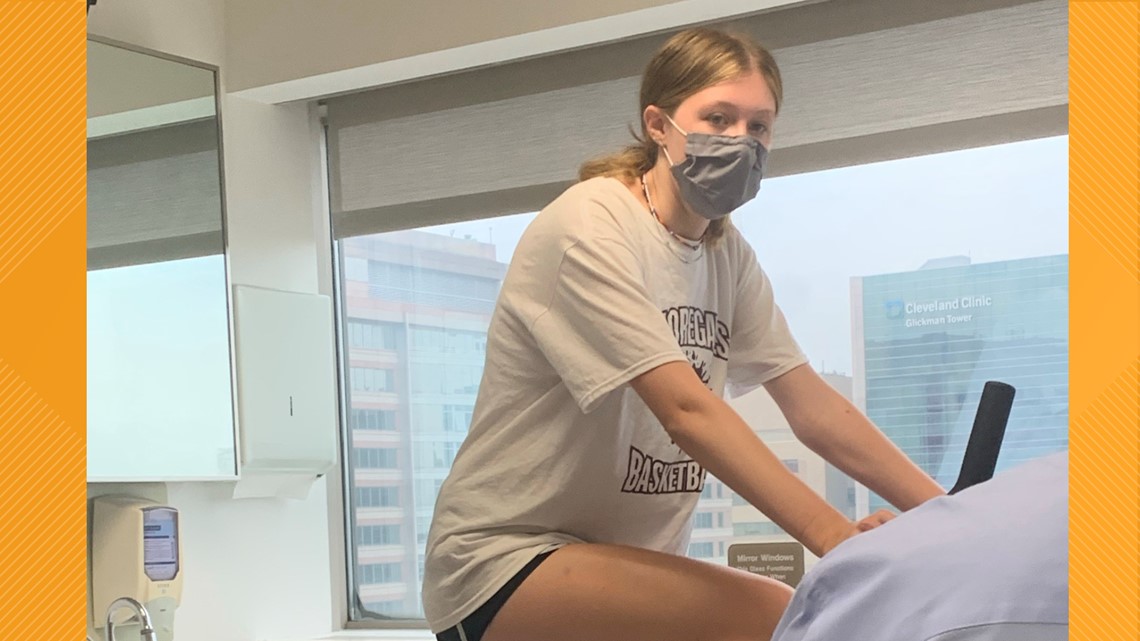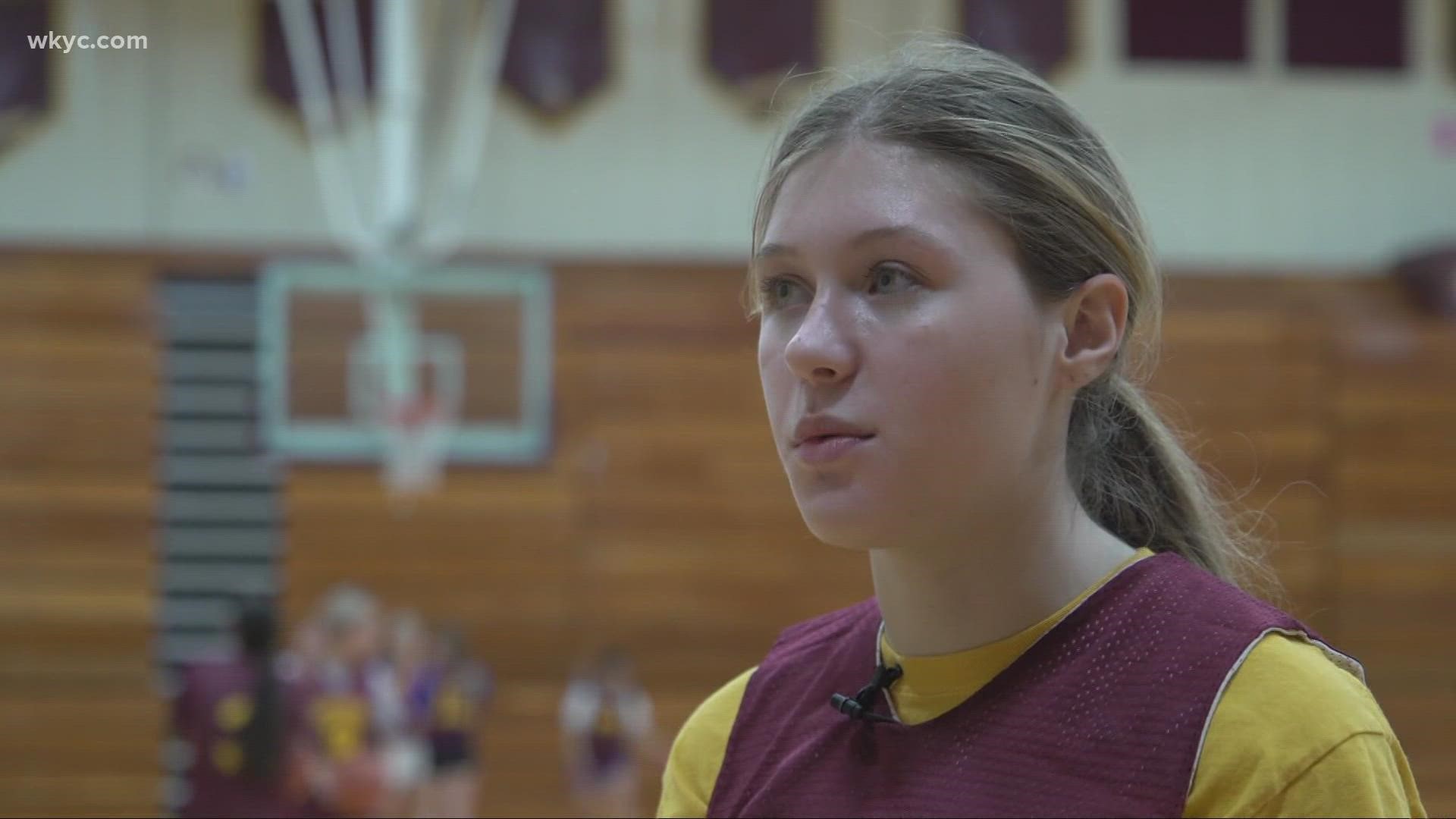AVON LAKE, Ohio — For Maya Austerman, there were other sports to try growing up, but she gravitated toward basketball, spending hours working on her game.
"That was basketball for me. I love basketball," said Maya.
Recreation leagues, travel teams, and middle school- Maya played as much as she could.
Her mother Suzanne Smith thinks it was about two years ago when something changed. She and other parents noticed it, watching from the stands.
"I would be watching and looking at her face, just blanche white. She was having trouble breathing. You could watch her hunch over and have a hard time getting up and down the court at her usual speed," Suzanne said.
The breathing issues only happened when Maya was on the court, in games or in practice. And the symptoms seemed to appear out to the blue.
Maya's symptoms included shortness of breath, chest and throat tightness, wheezing, the feeling as if she was breathing through a straw, and difficulty inhaling. The last symptom is important, as the family would discover eventually.
But the first thought was exercise-induced asthma and Maya was referred to a breathing specialist. Tests weren't conclusive. Maya didn't have the classic, tell-tale signs of exercise-induced bronchospasm, yet recommended the teen try a rescue inhaler to see if it offered any relief.
It didn't and actually made Maya feel worse.
"When I used the rescue inhaler, it didn't help at all. It would make me feel jittery," Maya said.
She played on, still struggling up and down the court. Her love of basketball diminished by the disappointment, physical discomfort and growing anxiety now attached to this unknown breathing condition.
"It really robbed her of the joy of playing basketball, which is something she had always found both exciting, but also something that came pretty easily to her. So it was really sad and we were worried that this was not a sport should be able to continue," said Suzanne.
Maya's pediatrician recommended she see a speech pathologist and referred her to Dr. Claudio Milstein, the director of the Voice Center at the Head and Neck Institute of the Cleveland Clinic. Around the same time, Suzanne read an article about another young athlete, with symptoms similar to Maya's. That athlete had been diagnosed with a vocal cord dysfunction known as EILO: Exercise-Induced Laryngeal Obstruction.


To understand EILO you need to understand a little bit about the inner workings of the throat. The voice box houses the vocal cords. The vocal cords open to let air in and out when we are breathing. The vocal cords also come together and vibrate when we talk, laugh, sing or cough.
"In this condition, EILO, what happens is that the inside of the throat, for some reason that we don't understand very well, it kind of starts working in the opposite way that it normally does. So when athletes need the most amount of oxygen, because they are doing intense exercise, the inside of the throat starts closing. And it narrows that space that we have for breathing. And the end result is shortness of breath," said Dr. Milstein.
Dr. Milstein and his team first had to rule out that Maya had the breathing issues that were linked to any more serious underlying causes. Then after a battery of tests that included a camera that would peak down her throat during exercise, EILO was confirmed.
The condition is often confused for asthma. Many of the symptoms are the same. But Dr. Milstein says, there's one that often stands apart.


"When you are playing sports or doing physical activity, and you feel short of breath, is, is it more difficult to breathe in or to breathe out in general? And again, this is in general terms, asthma will make it more difficult to breathe out, but in EILO it's more difficult to breathe in," he explained.
How many people are living with EILO? It's unclear. Dr. Milstein says only in the last decade has the condition become better understood.
"But we don't have national numbers as to how many people have it, mainly because it's still under-recognized and is frequently misdiagnosed. The most common misdiagnosis is to confuse this condition for asthma. So a good percentage of our patients, they were diagnosed with asthma. They are using the inhalers recommended for asthma, but they don't get any better. And that's what they usually bring with them to the clinic," Dr. Milstein said.
The treatment? Resetting or retraining the breathing pattern that is abnormal. Maya worked with a speech pathologist for several months, to learn how to control the inside of the voicebox to control the vocal cords.
Maya worked with a speech pathologist for months. Today, she has no symptoms and can run up and down the court without any problems at all. Basketball season is underway and she was named to the Varsity team at Avon Lake High School.
"I just never gave up and I practice and practice ended all the exercises and now I like made varsity and that was crazy," Maya said.
MORE FROM MONICA ROBINS:

